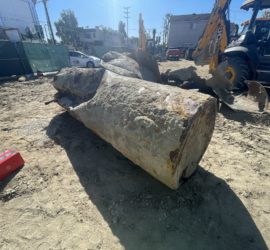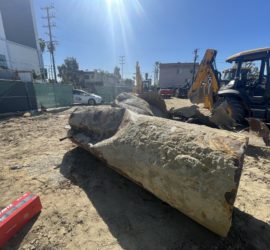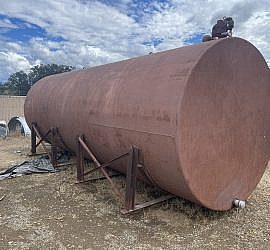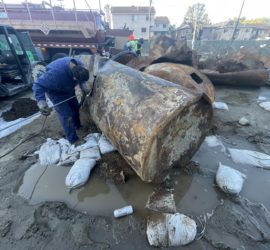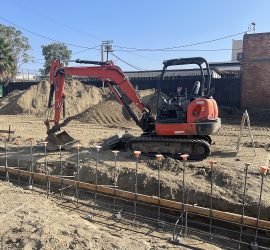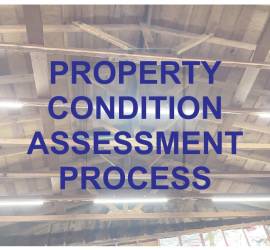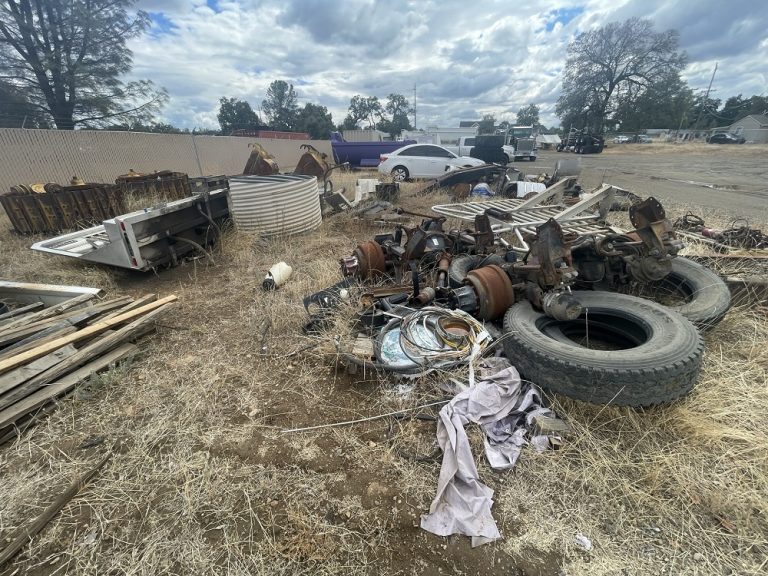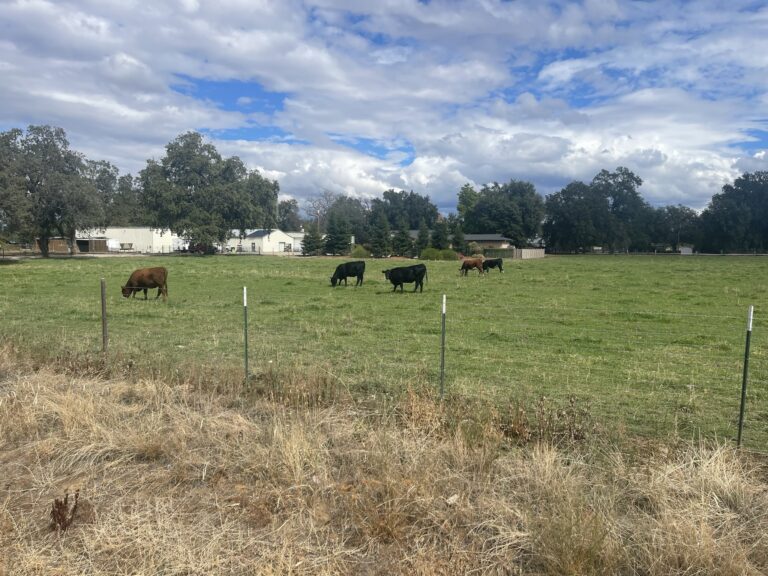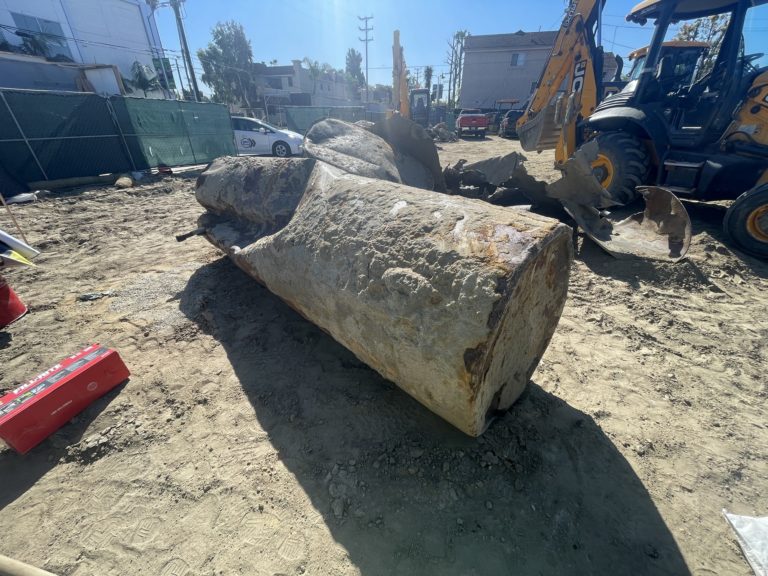Understanding the Underground Storage Tank Abandonment Process
The underground storage tank abandonment process is a complex series of construction and demolition tasks that require intensive environmental regulation and oversight. An underground storage tank, or “UST,” is a large vessel, usually comprising steel or fiberglass, that serves to hold large volumes of liquid. These tanks typically hold petroleum products, such as gasoline or oil. Similarly, USTs frequently contain other non-petroleum hazardous substances, such as solvents and wastewater. Each UST system typically includes piping and dispenser ports that trend above the ground surface. Oftentimes, environmental site assessment reports recommend removing and cleaning up leaking underground storage tanks, because they are recognizable environmental conditions. Updated April 9, 2024.
Unless the tank is in good condition and actively in use for storage, environmental professionals always recommend performing the underground storage tank abandonment process. In fact, the sooner the better. This is because the longer a UST exists underground, the more likely soil contamination occurs. And typically, this means the costlier the contamination remediation process. There are several reasons why excavation needs to occur prior to abandoning the tank and its components. Whatever the reason happens to be, the UST removal process will be generally similar.
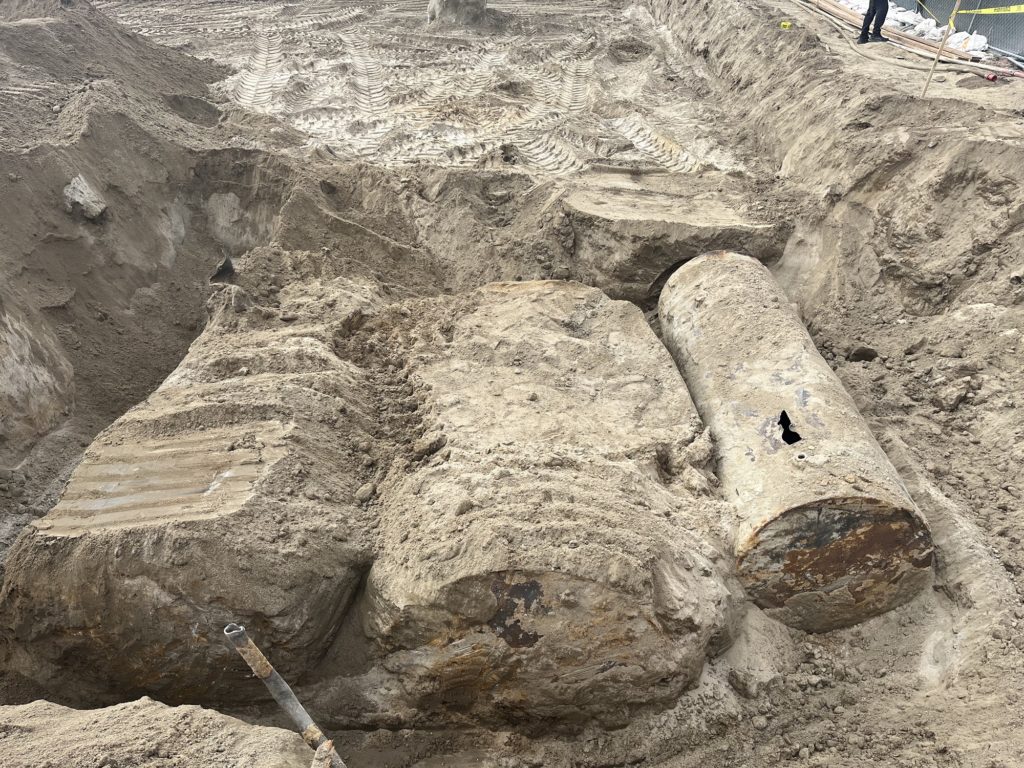
Out-of-Use Tanks
Sometimes a property owner simply does not use their UST anymore. Perhaps their business no longer requires this type of underground storage tank. Or, maybe a newer UST is in use, and the old one remains underground. Nonetheless, unusable tanks pose a threat to the environment, and best practices and laws suggest removal. For instance, in California, if a UST is out of use for longer than one year, it must be permanently abandoned. It is possible that a property owner unwittingly comes into possession of an old underground storage tank that happens to already exist on the property.
Leaking Tanks
In some cases, the underground storage tank may be discoverable during a Phase 1 Environmental Site Assessment (ESA). The surrounding soil may comprise contamination according to the Phase 2 Environmental Site Assessment. This is essentially another example of a leaking UST that comes with a site. But this situation presents the additional problem of contamination to the subsurface. For instance, soil gas, soil, and groundwater. In this case, environmental professionals typically advise that the UST undergo excavation and disposal, prior to commencing with contamination remediation. In fact, some smaller extents of subsurface contamination from underground gasoline tanks may undergo remediation by excavation during the UST removal process. Ultimately, the first step to proceed would be to have a professional geologist prepare a soil management plan and remedial action plan outlining the excavation and clean-up process.
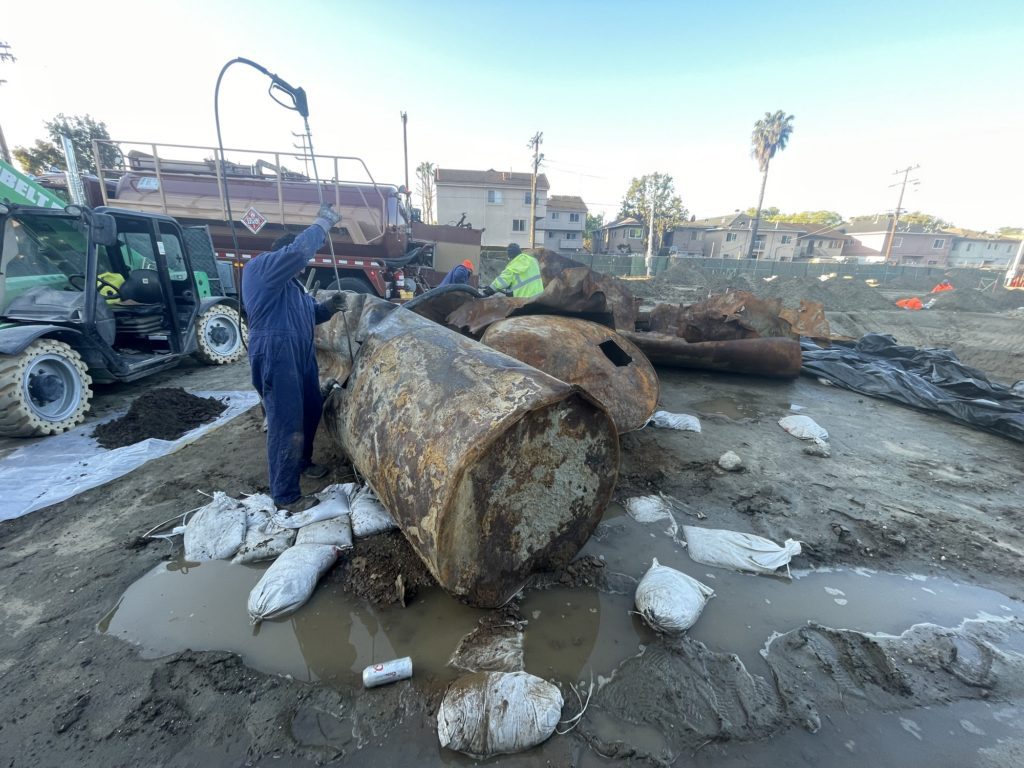

Replacing a Tank
In this scenario, an older and obsolete UST may require removal and replacement in order to operate in compliance with new regulations. For instance, modern upgrades include double- or triple-wall tanks, which are now the regulation requirements in most jurisdictions. In fact, a recent law in California requires that all single-wall USTs be permanent by the year 2025. Upgrading UST systems may also include enhancements to the product piping and dispenser system. These improvements further reduce the likelihood of a leak. In all these examples, a professional geologist can make sure the removal process is straightforward, safe, and compliant with all regulations.
The Underground Storage Tank Abandonment Process
Prerequisites
Before getting the permits for underground storage tank abandonment, certain requirements must be in place. This includes the approval to conduct the necessary confirmation soil sampling, as well as the drilling. Additionally, there are likely to be prerequisites permits for the final UST removal permit. For instance, drilling for confirmation soil sampling may require a drilling permit via the local environmental health department. Moreover, plans and details will be necessary. These can comprise a series of site maps that note the locations of all UST excavations. The information must describe the size, history, content, and status of the tanks on-site. Furthermore, the applicant must submit a copy of the contractor’s license for the company leading the project. Lastly, the application and supporting documents must get clearance and approval from the appropriate plan check office for approval. For instance, the local fire and hazmat department, or building department.
UST Removal Permitting
Typically, City, County, and State Environmental Agencies are the regulatory authorities responsible for overseeing underground storage tank abandonment. For example, in California, the State Environmental Protection Agency (CalEPA), the Department of Toxic Substances Control (DTSC), and the State Water Resources Control Board (SWRQCB) maintain UST abandonment standards but require oversight by the respective County’s “Certification Unified Program Agency” (CUPA). Usually, the CUPA is a division of a Fire Department or Health Department.
Abandonment in Place
Although rare, there are special cases where it is necessary to leave the UST as is and fill it with a cement slurry in order to stabilize it. This method is only allowable if the tank is inaccessible for removal. For instance, if the underground tank is directly below a building perimeter or retaining wall, it may not be removable without compromising structural integrity. In such a case, an additional special permit becomes necessary, in addition to the original UST abandonment permit. These processes involve strict approval and inspection by the appropriate CUPA.
Fieldwork for the Underground Storage Tank Abandonment & Removal Process
Strict compliance with the standard procedures and environmental agency protocol is mandatory to obtain a “No Further Action” certificate. There are various prerequisites, qualifications, and fees to file successful UST abandonment permit applications. Additionally, navigating the local regulatory authorities, executing a proper excavation, testing for soil contamination, and implementing efficient remediation methods are also required. Lastly, the entire process must satisfy oversight agency inspectors. A final report with professional geological certification, toxicological certification, waste disposal record, and more must be approved by the lead environmental agency.
Preparing the Site for UST Removal
Before excavation begins, there are mandatory steps to complete to achieve environmental compliance and satisfy health and safety standards. These steps aim to identify the chemical contents of the UST and eliminate the possibility of leaks, spills, contamination, and public danger during and after the removal process.
Emptying the Tank
Firstly, the underground storage tank contractor must evacuate the tank of any liquid or residue. Typically, UST contents, whether liquid or vapor phase, are flammable and toxic. So after evacuation, there is a mandatory inerting process. In fact, UST inerting requires oversight and certification by a professional toxicologist. The transportation and disposal of such materials may require additional permits, along with regulation by appropriate government agencies.
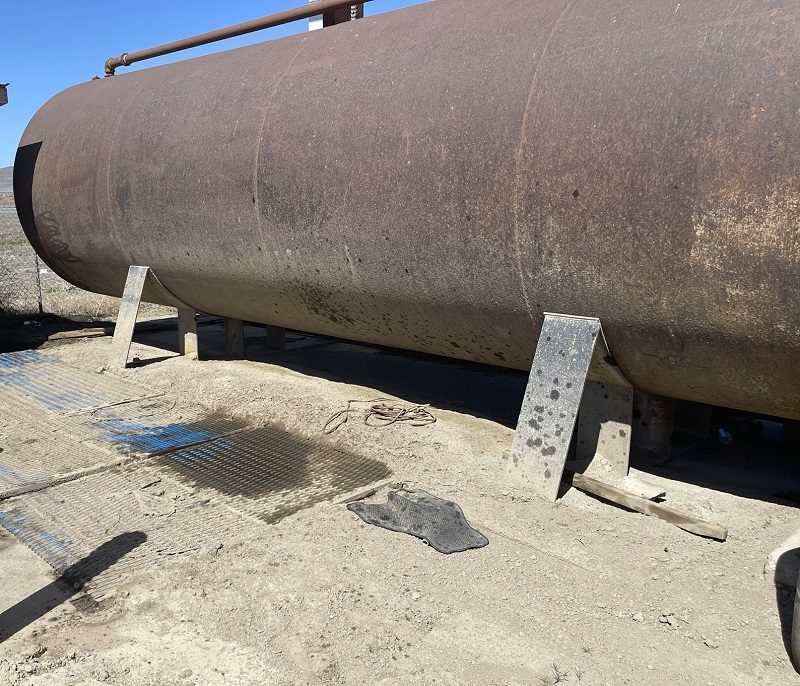

Underground Storage Tank Inert Process
If the UST has been recently emptied of combustible material, it is important to replace the flammable gasses inside with a non-combustible gas. Most of the time, dry ice (carbon dioxide) implants help displace the vapors in the UST. Regardless of the successful inerting process, the underground storage tank contractor must reduce the risk of explosion. Hot work training, certification, and permits are part of the UST abandonment process, whereby it becomes mandatory to avoid flames or sparks.
Certified Clean Tanks
Only certain Certified Professionals can declare a UST clean, meaning there are no sludges, debris, or vapors inside the tank. With a “Clean Certificate,” there are more options available on-site, such as cutting methods that use heat or flames, and tools that produce sparks. Such methods comprise what is known as “Hot Work.”
Excavating the Site
Typically, a Soils Management Plan is the leading guideline for the excavation process of removing a UST, as well as the backfilling and compaction testing. The process of physically removing the UST will commence with digging, using standard construction equipment such as backhoes and excavators. This same equipment applies to hoisting the underground storage tank out of the hole, by securing it with chains and lifting it. For very large tanks, contractors will require using a crane to raise the UST out of the pit. All of the soil burdens from the ground must remain on-site until the soil sampling and laboratory analysis is complete.
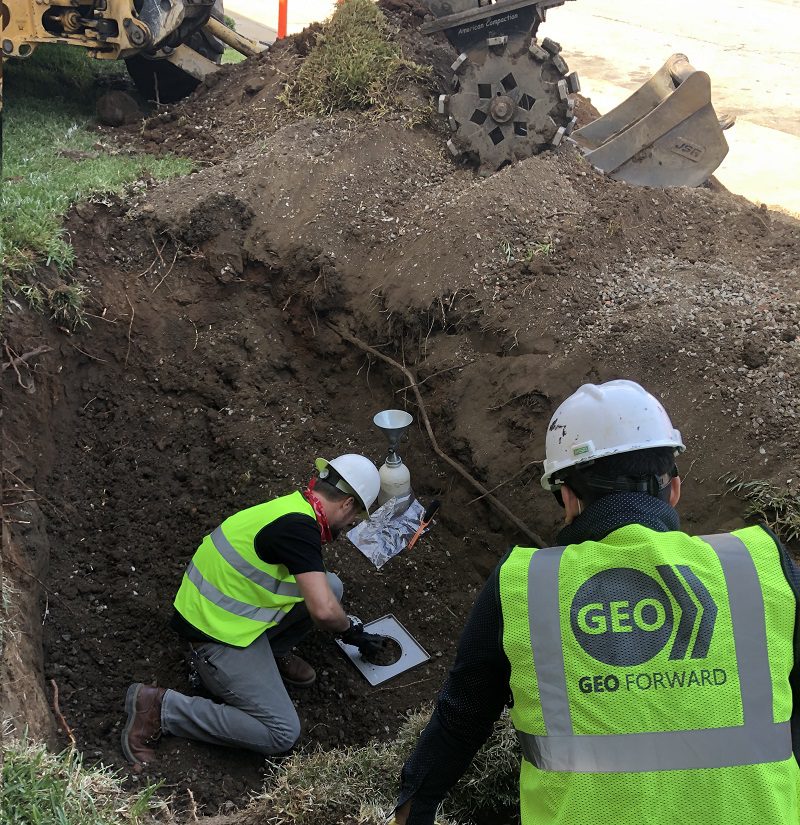

Confirmation Soil Sampling
Under the direction of a professional geologist or engineer, the soil around the UST must be tested for contamination. If the soil is found to be free of petroleum products and other hazardous materials, then the soil that was removed may be used to backfill the excavation pit. Otherwise, the contaminated soil must be removed under hazardous material guidelines, new clean soil must be used to fill the pit, and further testing will be necessary to determine the best course of action for remediation.
Disposal of the UST Materials
After removing the UST from the subsurface, a thorough cleaning is necessary before hauling it off for recycling. In most cases, the UST undergoes pressure washing and rinsing on-site, before transportation. The remaining rinse water must drain into U.S. Department of Transportation transport containers such as 55-gallon steel drums or 275-gallon IBC totes. Lastly, all waste, from construction debris to rinse water requires proper transportation and disposal protocol, in accordance with the Environmental Protection Agency registration and waste manifest.
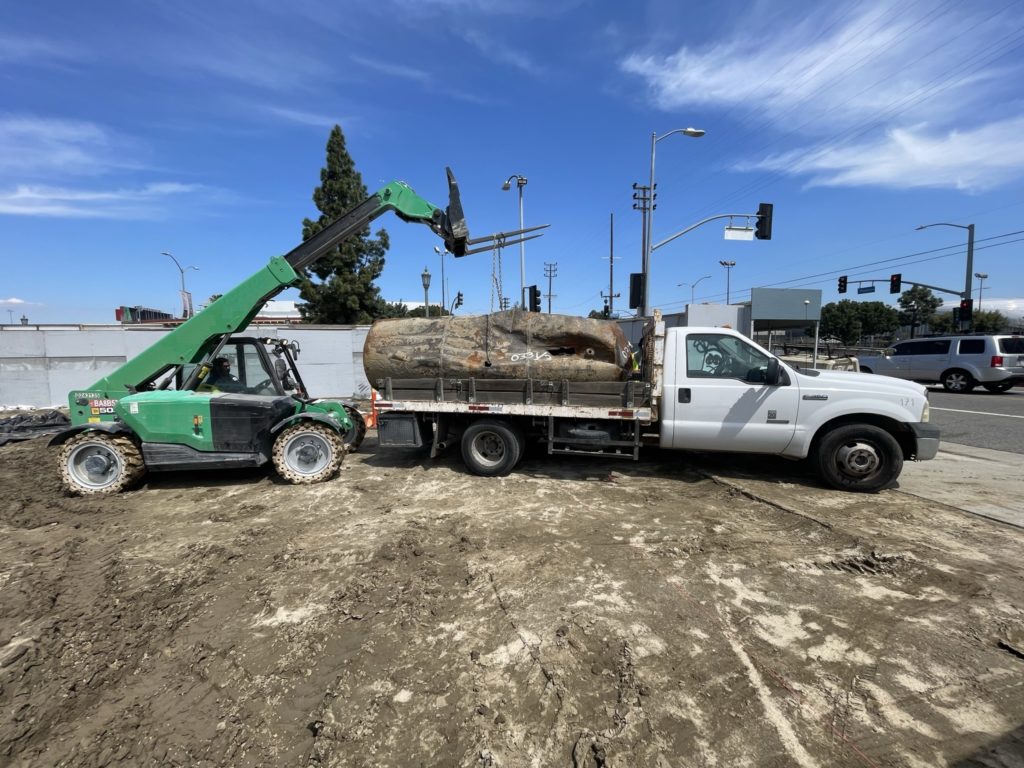

Underground Storage Tank Abandonment Report Writing
The professional geologist or engineer leading the project will be responsible for submitting an “Underground Storage Tank Abandonment Report.” This final report will summarize the on-site activities as well as the results of the soil analysis. If further action is necessary, then recommendations for the next steps will also be in the report. A professional geologist or engineer must sign and stamp this document prior to submitting it to the regulatory agency. For example, the Los Angeles Fire Department requires a professional geologist to stamp UST closure report. These reports are frequently under additional review by other geologists at the Regional Water Quality Control Board. Copies of this report also remain with the property owner, as well as the other regulatory agencies with involvement.
Closure
Completion of the underground Storage tank abandonment process occurs after successfully performing all of the above requirements. At this stage, the environmental professional files all the relatable documents together. This includes the original permit application. Unless there is an ongoing remediation project at the site, this is where the UST removal process ends.
Sources:
https://www.fedcenter.gov/assistance/facilitytour/tanks/underground/
https://www.lafd.org/fire-prevention/cupa/ust-tank-abandonment-guidelines
https://www.waterboards.ca.gov/water_issues/programs/ust/
http://cms.sbcounty.gov/portals/58/Documents/Hazardous_Materials/Removal_procedures.pdf

